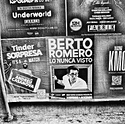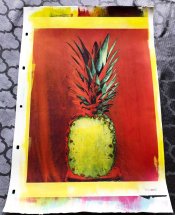berarthbun
Subscriber
- Joined
- Aug 23, 2015
- Messages
- 78
- Format
- 8x10 Format
Hopefully this the right place to ask this question. I'm creating palladium prints using digital negatives. Lately I have creating images that could use a hint of color. Back in the day I would use oils to had color silver gelatin prints. I attempted the same technique on a palladium print with disastrous results. The first attempt was with traditional oils diluted with mineral spirits. The diluted oils soaked right into the paper. The next attempt was using watercolors. I diluted the mixture, yet the watercolors soak right into the paper. I have tried various mediums with the same results. The watercolors and oils soak in and cannot be lifted. The real issue is if the oils or watercolors bleed into an area where they are not wanted. This is easily solved when using the same techniques on silver gelatin prints. I have even tried to coat the paper with gelatin sizing. The results were the same. I have seen hand colored platinum palladium prints in the past so I know that this is possible. I have tried both Arches and Hahnemuhle. There must be some technique that works. I would love to hear opinions.
~Bruce
~Bruce







